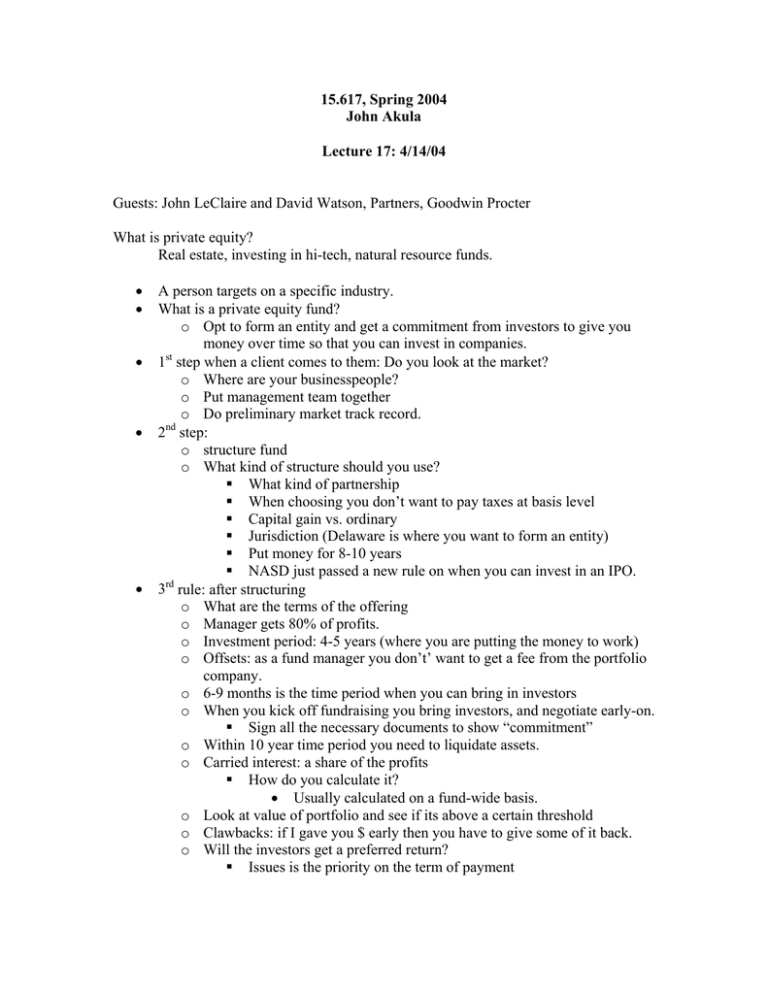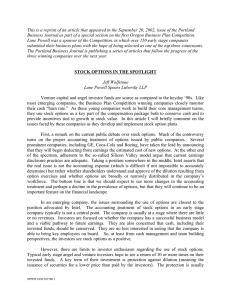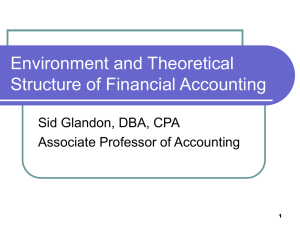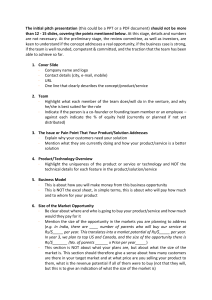15.617, Spring 2004 John Akula Lecture 17: 4/14/04
advertisement

15.617, Spring 2004 John Akula Lecture 17: 4/14/04 Guests: John LeClaire and David Watson, Partners, Goodwin Procter What is private equity? Real estate, investing in hi-tech, natural resource funds. • A person targets on a specific industry. • What is a private equity fund? o Opt to form an entity and get a commitment from investors to give you money over time so that you can invest in companies. st • 1 step when a client comes to them: Do you look at the market? o Where are your businesspeople? o Put management team together o Do preliminary market track record. nd • 2 step: o structure fund o What kind of structure should you use? What kind of partnership When choosing you don’t want to pay taxes at basis level Capital gain vs. ordinary Jurisdiction (Delaware is where you want to form an entity) Put money for 8-10 years NASD just passed a new rule on when you can invest in an IPO. rd • 3 rule: after structuring o What are the terms of the offering o Manager gets 80% of profits. o Investment period: 4-5 years (where you are putting the money to work) o Offsets: as a fund manager you don’t’ want to get a fee from the portfolio company. o 6-9 months is the time period when you can bring in investors o When you kick off fundraising you bring investors, and negotiate early-on. Sign all the necessary documents to show “commitment” o Within 10 year time period you need to liquidate assets. o Carried interest: a share of the profits How do you calculate it? • Usually calculated on a fund-wide basis. o Look at value of portfolio and see if its above a certain threshold o Clawbacks: if I gave you $ early then you have to give some of it back. o Will the investors get a preferred return? Issues is the priority on the term of payment • • • Clients make 1st mistake in raising money A typical private equity fund is about $200,000 in legal fees. April 14, 2000: bubble burst (people were skittish to put $ in)











